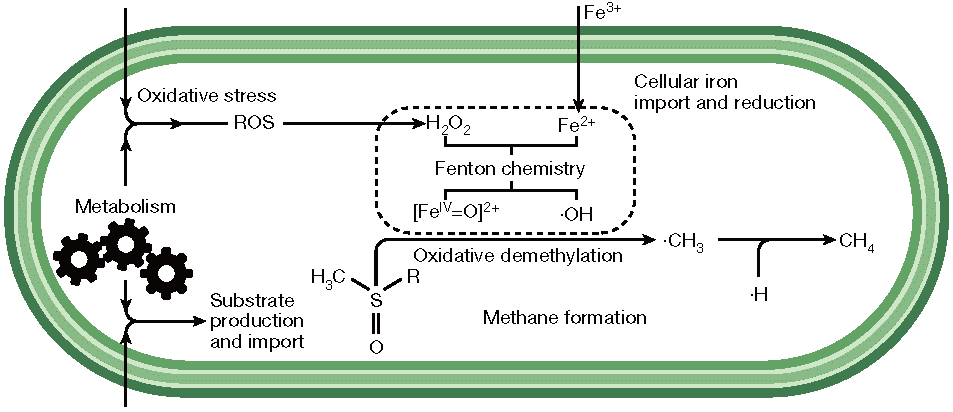(Upload on May 13 2025) [ 日本語 | English ]
Mount Usu / Sarobetsu post-mined peatland
From left: Crater basin in 1986 and 2006. Cottongrass / Daylily
HOME > Lecture catalog / Research summary > Glossary > Global warming
Greenhouse effect (温室効果)Thermal radiation from a planetary surface is absorbed and re-radiated by atmospheric greenhouse gases represented by CO2Temperatureelectromagnetic spectrum (電磁スペクトル), climate (気候)A physical property of a system that underlies the common notions of hot and cold
absolute temperature Thermal timeConcerened with seed germination (種子発芽) (Black et al. 2006) and seed dormancy (種子休眠)Cumulative temperature above a base temperature below which plant development (or germination) ceases, and is often calculated on a daily basis, as follows. Tt (°C d) = Σ(((Tmax - Tmin)/2) - Tb) |
[ warming experiment | methane ] Data are plotted as the reciprocal of the duration (in days) to x% germination against the mean temperature (T). The inverse of duration (1 d-1) represents the development rate (DR). Least squares regression analysis was used for the positive linear portion of the response whereby:
DR = a1 + b1T |
To demonstrate the effects of climate chages on plants in fields, the following field experiments are important.
Table 1a. Comparison of currently used methods for experimental warming of terrestrial ecosystems (Shaver et al. 2000)
| Method | Mechanisms of warming | Advantage | Disadvantage |
|---|---|---|---|
| Field greenhouse | "Greenhouse warming" (i.e., reflection of reradiated infrared energy and reduced advective energy loss) | Simple and inexpensive; requires no electrical power | Little or no temperature control and large temperature variability; other artifacts include altered light, wind, humidity, and precipitation regimes |
| Passive open-top chamber (OTC) | Same as above | Same as above | Little or no temperature control; altered wind and humidity; only small areas can be manipulated uniformly |
| Active open-top chamber (OTC) | Same as above plus warming by advection of electrically heated, forced warm air | Precise control of air temperature difference; may be combined with CO2 control | Altered wind regime, humidity, and evapotranspiration |
| Active soil warming | Warming by conduction from buried electrical resistance cables | Precise control of soil temperature difference; may be combined with greenhouses or OTCs | Altered soil moisture regime; no effect on aboveground temperatures |
| Electric infrared heat | Warming by increased infrared radiation | Precise control of energy input; direct simulation of global change in energy balance | Warming depends entirely on radiation; no change in advective energy inputs |
| Reciprocal or one-way transplantation | Transplantation of plants, soils, or whole plant?soil systems to warmer or cooler locations | Comparison of relatively natural temperature gradients | Disturbance effects; multiple environmental changes make it difficult to assign specific causes to responses observed |
|
Methane is the one of the major global-warming gas. Global Warnming Potential (GWP) is 21 (or 23). → wetland (湿原) Methane emissionsMethane flux and vegetation types in grassy marshlands near Kolyma River, northern SiberiaTable 2. Mean values with standard error of each environmental factor in each cluster group. The different letters upper-right the mean values indicate significantly different at P < 0.01 (Tukey's HSD test). Except for the measurement of pH, EC, Eh and thaw depth in cluster group 1 where we did not measure in four plots, sample numbers are coincidence with number of plots clustered by TWINSPAN (Table 1). On water depth, minus value indicates the depth of soil where the ground water appeared. (Tsuyuzaki et al. 2001) |
It may be possible that terrestial plants emit methane under aerobic conditions that has not been mentioned (Keppler et al. 2006). Methane formation driven by reactive oxygen species across all living organisms (Ernst et al. 2022)  Fig. 1. Proposed mechanism of ROS-driven CH4 formation in living systems. CH4 formation from methyl radicals, which are produced in cells by ROS and ferrous iron. Metabolically active cells generate H2O2 and import and reduce ferric iron, thereby fuelling the Fenton chemistry that drives methyl radical formation from metabolites containing sulfur- and/or nitrogen-bonded methyl groups. Conditions that affect cellular levels of ROS, ferrous iron and external supply or cellular production of methyl donor substrates modulate CH4 formation. |
| Grassland type | Eriophorum grassland |
Horsetail grassland |
Carex grassland |
All plots |
|---|---|---|---|---|
| Water depth (cm) | -5.1 ± 0.8a | 5.2 ± 0.3b | 5.4 ± 0.5b | 2.90 ± 0.6 |
| pH | 5.75 ± 0.04a | 6.15 ± 0.03b | 6.25 ± 0.01c | 6.08 ± 0.03 |
| Air temperature (°C) | 18.8 ± 0.9 | 17.0 ± 1.0 | 17.4 ± 0.3 | 17.5 ± 0.6 |
| EC (mS/m) | 5.20 ± 0.29a | 8.86 ± 0.30b | 6.61 ± 0.13c | 7.64 ± 0.26 |
| Eh (mV) | 451.4 ± 7.8a | 455.7 ± 2.0a | 454.9 ± 1.2a | 454.6 ± 2.2 |
| Soil humidity (%) | 49.8 ± 2.3a | 63.8 ± 1.4b | 55.5 ± 1.0a | 58.6 ± 1.2 |
| Thaw depth (cm) | 39.7 ± 0.8a | 69.4 ± 3.2b | 59.4 ± 0.4b | 59.8 ± 2.5 |
| Elevation difference (cm) | 7.6 ± 0.8a | 10.1 ± 0.4a | 14.7 ± 0.9b | 10.2 ± 0.4 |
| Methane flux (mg CH4/m²/d) | -1.9 ± 1.6a | 165.5 ± 6.8b | 73.2 ± 4.9c | 105.1 ± 9.5 |
SRES= special report on emissions scenariosIPCC Representative Concentration Pathways (RCP) |